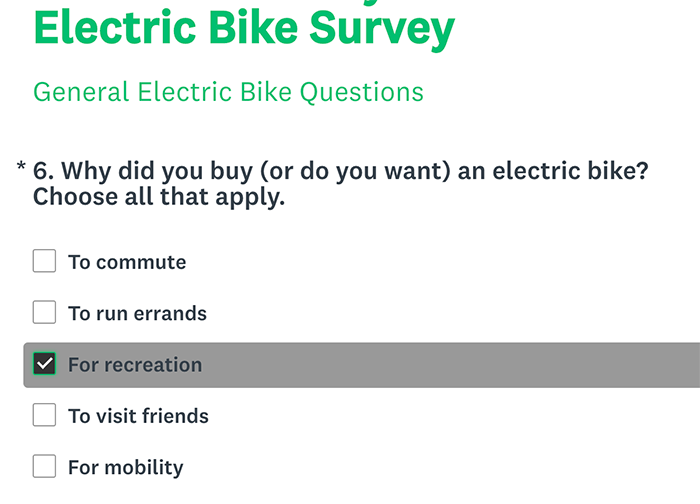It is the thing that will attract journalists or bloggers. That story begins with the questions. Good questions should result in interesting survey results. And our goal is to earn media coverage. Having a goal for the survey, by the way, is what SurveyMonkey — which makes an online survey tool — puts first on its list of best practices for creating an effective survey. Include a survey link in the body of the email newsletter. Link to the survey from all of your business’s social media profiles. I could combine the survey results with retirement income data from the U.S. Bureau of Labor Statistics and information about how many Americans are living longer and looking for recreational activities to help keep them in shape (which was a top answer for why they own or desire an electric bike). This landing page is where you will send journalists to get more information. Assemble the survey results, associated insights, and the story into one or more press releases and pitches.
A simple, survey-based public relations campaign can help an ecommerce business build its brand, attract backlinks for search engine optimization, and encourage sales.
In this article, I will outline the major steps to run a survey-based PR campaign. This campaign is meant to inspire at least a few journalists to write about the survey results. The articles they produce may include backlinks for SEO. And those articles could introduce potential customers to your business.
Create a Questionnaire
In our PR campaign, the consumer survey is the prize. It is the thing that will attract journalists or bloggers. So the data we provide must be interesting and informative.
For example, if we pitched survey results showing that folks with relatively high incomes, perhaps $200,000 per year, are more likely to buy expensive luxury products, it would probably not be newsworthy. Most reporters would assume as much.
Rather we want to use the survey to tell or imply a story that reporters and bloggers will want to share. Something unexpected, perhaps. That story begins with the questions.
Good questions should result in interesting survey results. Interesting results should engage reporters and bloggers. And our goal is to earn media coverage.
Having a goal for the survey, by the way, is what SurveyMonkey — which makes an online survey tool — puts first on its list of best practices for creating an effective survey.
The full SurveyMonkey list contains 10 items:
- Define a clear, attainable goal.
- Put personal questions at the end of the survey.
- Keep the survey relatively short.
- Use multiple choice and checkbox questions predominantly.
- Consider using an incentive.
- Don’t ask leading questions.
- Keep your answer choices balanced.
- Avoid absolutes.
- Ask just one thing per question.
- Preview your survey before you send it.
With the goal in mind, take the time to write several questions. Have co-workers proof and critique them.
Collect Responses
Once you have developed the survey questions, add them to a survey tool, consider an incentive, and decide how long you will keep the survey open — I often use two months. Then begin collecting responses.
You could create a custom survey form for your website or, perhaps, use Google Forms. But there are several good survey tools that make collecting and analyzing results easy. SurveyMonkey, mentioned above, is a good choice. So are Qualtrics, SurveyGizmo, and SoGoSurvey, to name a few.

COMMENTS